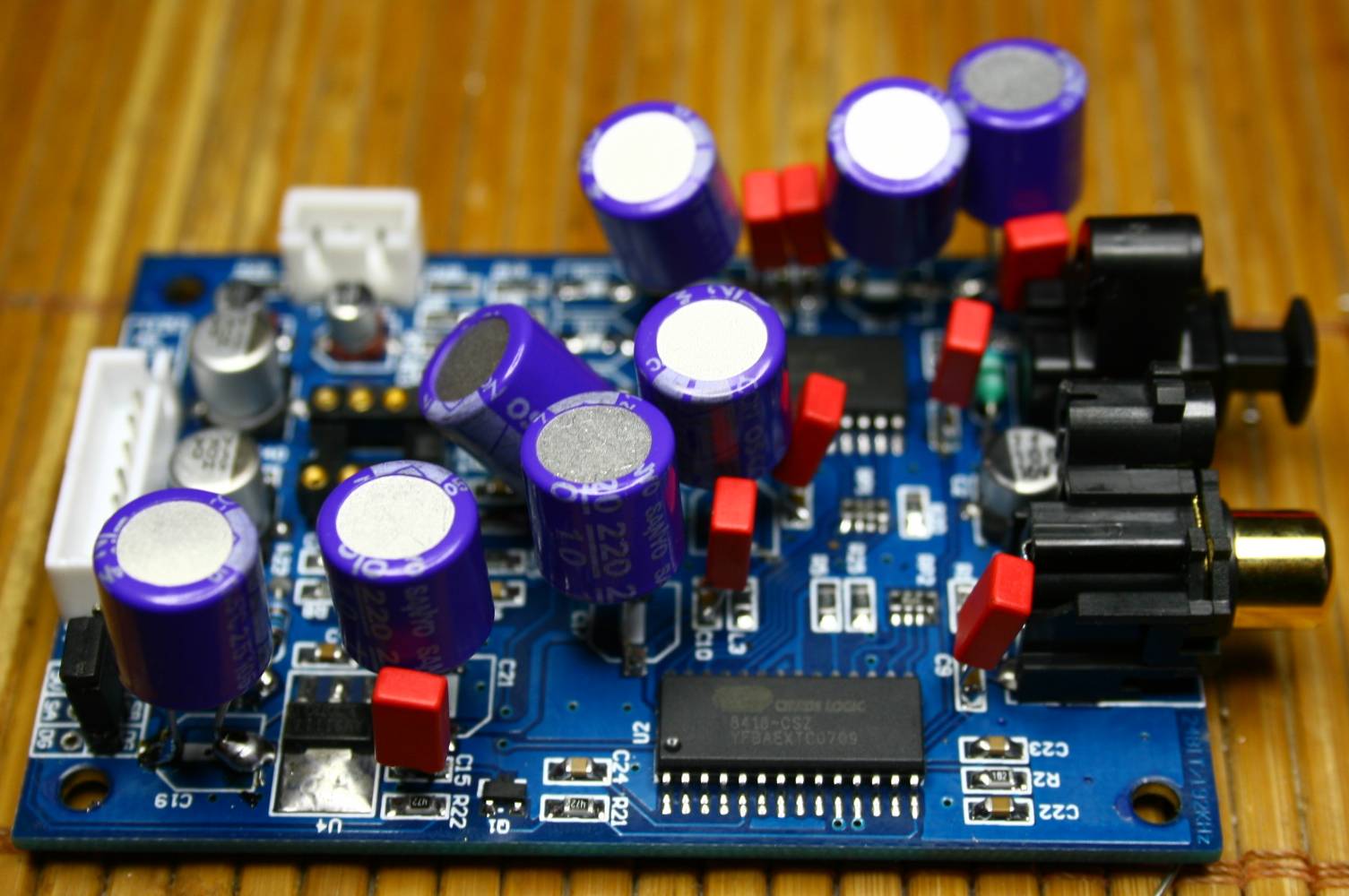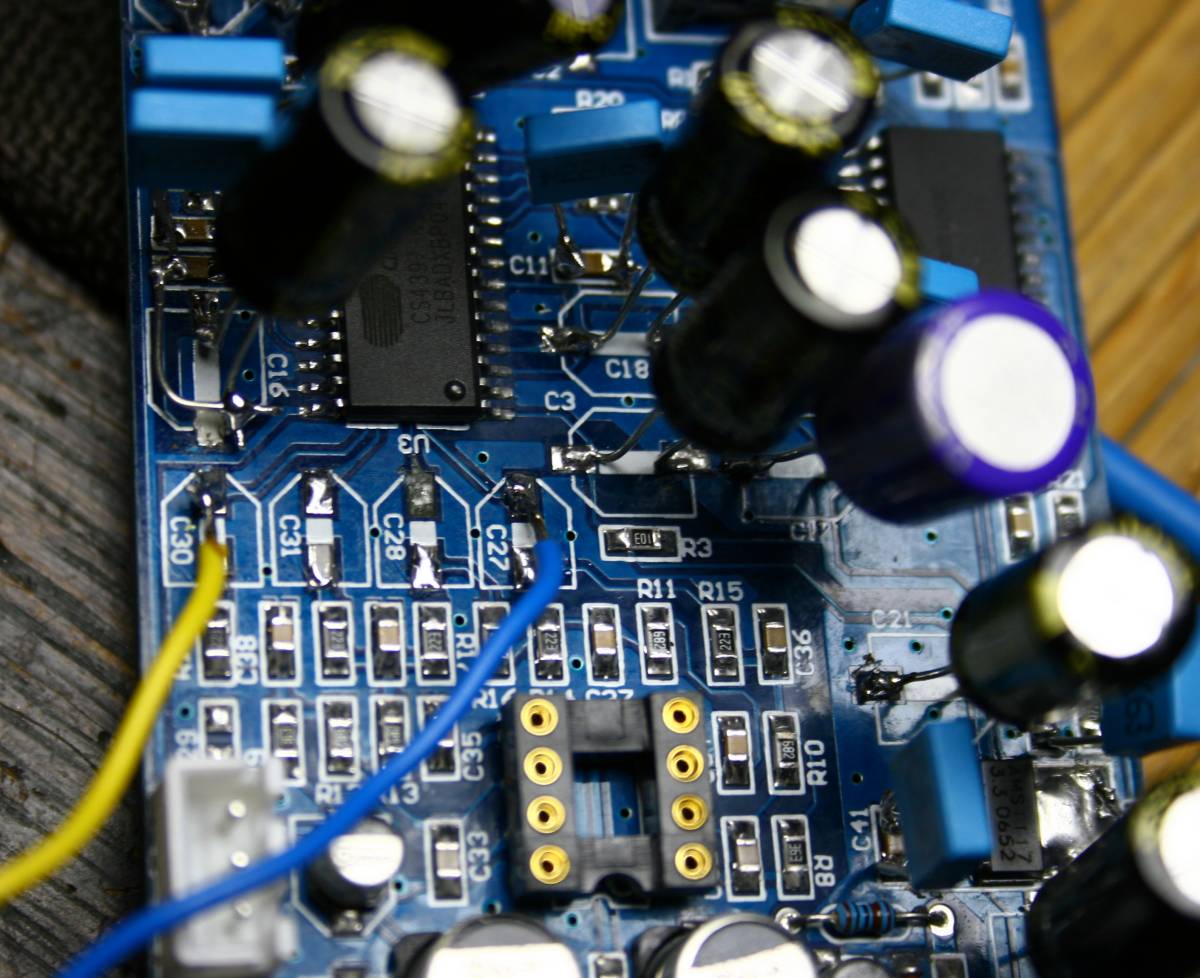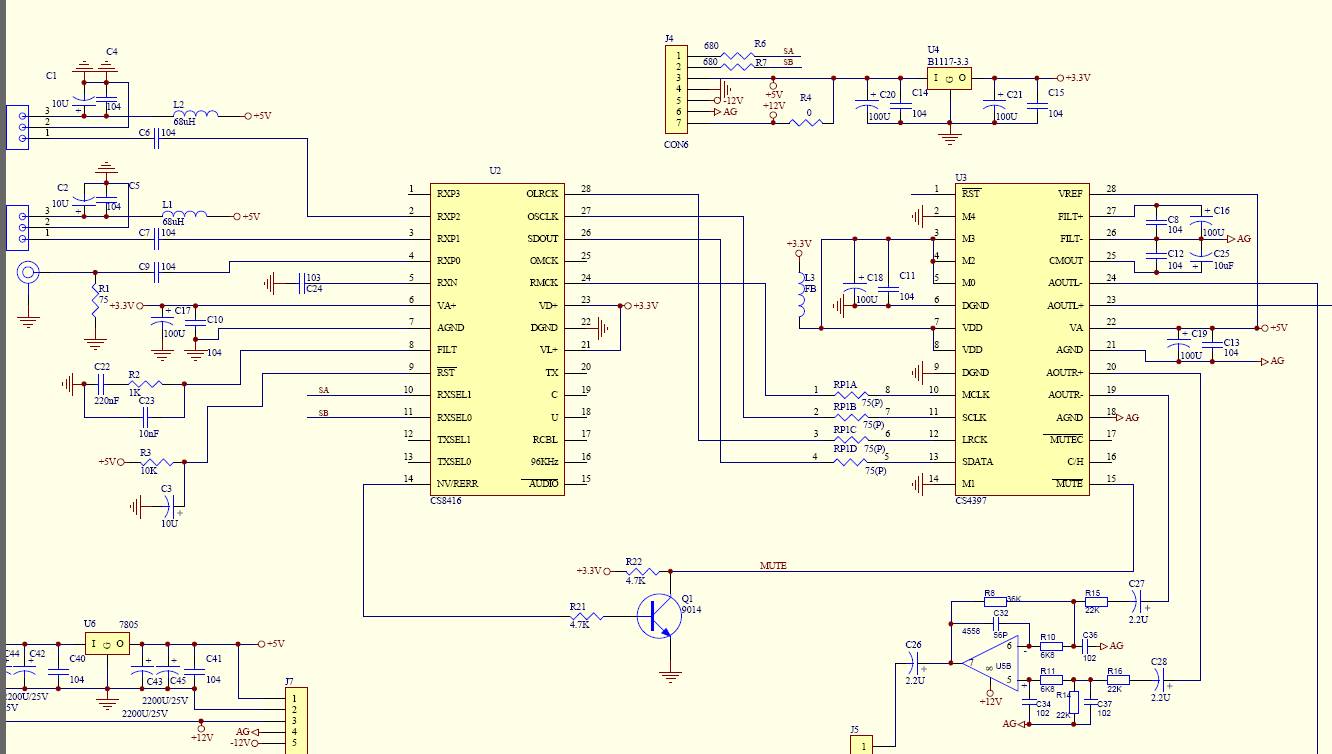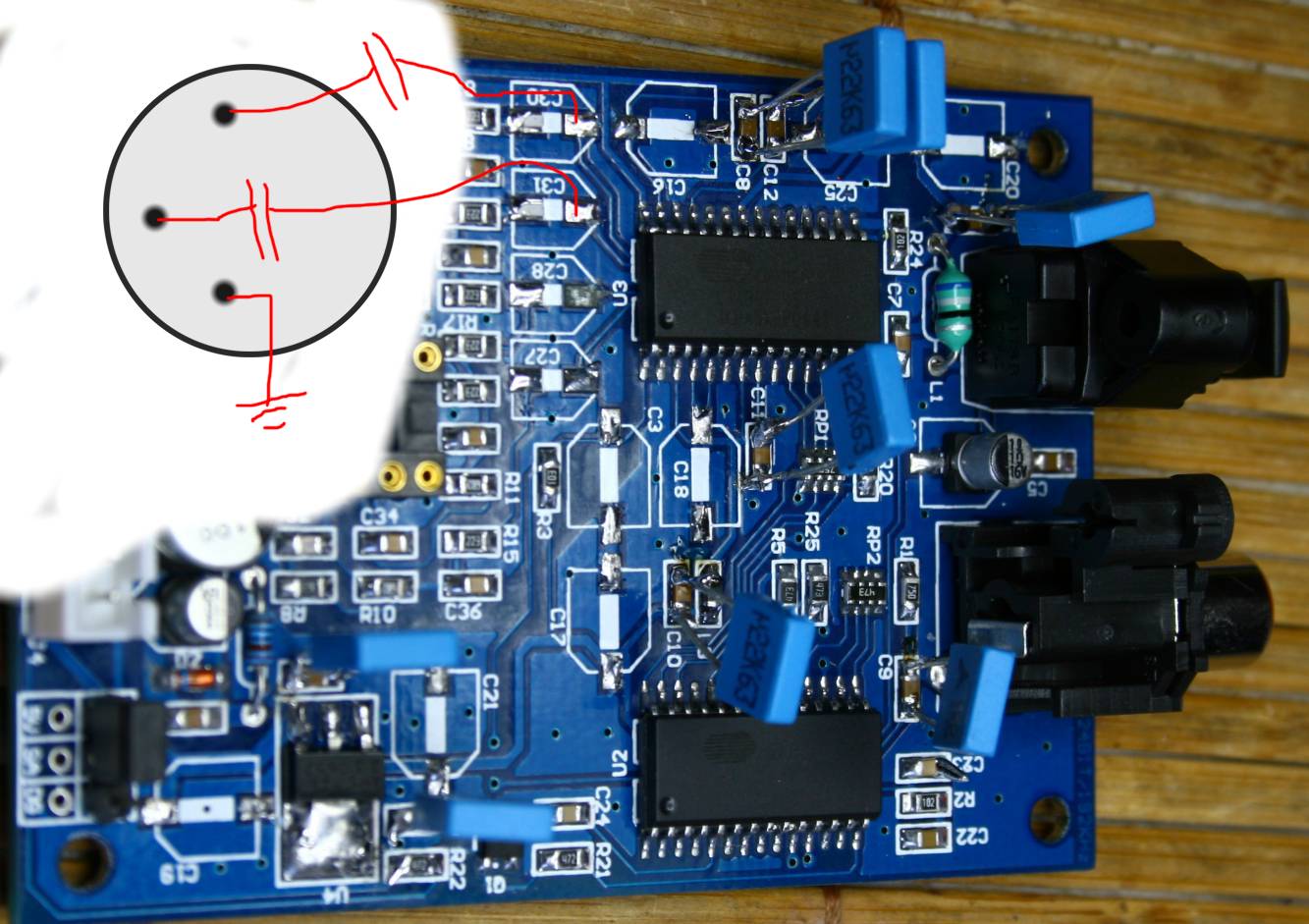so R2 becomes 3k, C22 becomes 22nF, and C23 becomes 1 nF
Just like here:








http://theartofsound.net/forum/showthread.php?t=315Probably the long legs of these caps - at these huge frequencies - cancell any positive effect of the tweak. In reality the parts should be smd.
so R2 becomes 3k, C22 becomes 22nF, and C23 becomes 1 nF
Just like here:








|
CREEK CD42 Mk 2 |
CS4328 |
|
|
CREEK CD43 |
CS4390 |
CDM 14 Sony |
|
CREEK CD43 Mk 2 |
CS4396 |
CDM 12 |
|
CREEK CD50 |
CS4396 |
CDM 12 |
|
CREEK CD50 Mk 2 |
CS4396 |
DVD-ROM DVS DSL-710A |
|
CREEK CD53 |
CS4396 |
CDM 12 |
|
CREEK CD60 |
TDA1541A-S1 – SAA7220P/B |
CDM-4/14 |
|
CREEK EVO CDP |
PCM1738 |
Philips VAM 1201 |
MARANTZ SA-12 S1 CS4397
MARANTZ
SA-14
CS4397
MARANTZ SA-12S1
MARANTZ SA-13S1
MARANTZ SA-14
MARANTZ SA-15S1
MARANTZ SA-17S1
MARANTZ SA7001
MARANTZ SA8001
MARANTZ SA8260
MARANTZ SA8400
|
|
|
|
